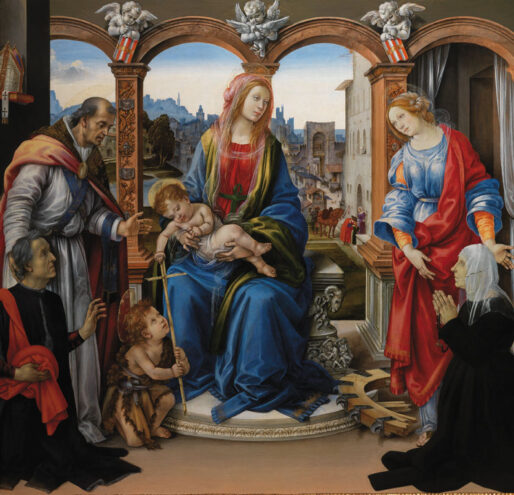
Nerli Altarpiece1485-1488
The work was commissioned by Tanai, diminutive of Jacopo’s French, de’ Nerli, to place it on the family altar where it is still located. In the absence of reliable documentation on the table, various hypotheses of dating have been formulated over time, which diverge mainly on the question of whether the painting was executed before or after Filippino’s trip to Rome (1488-1493).
Berenson and Adolfo Venturi read classical details in the architecture and in some details that made us think of a direct knowledge of the ancient models seen in the eternal city. Others (such as Sharf, Mengin, Berti, Baldini) believe it to be earlier, linking it to other important works of renewal of the altars of the Holy Spirit, such as the commission of the Madonna Bardi in Botticelli, dating back to 1485.
Recent research on documents held at the Florence State Archives supports the hypothesis that the painting was commissioned and executed by Filippino before his Journey to Rome, proposing a date between 1485 and 1488 (from Wikipedia).
